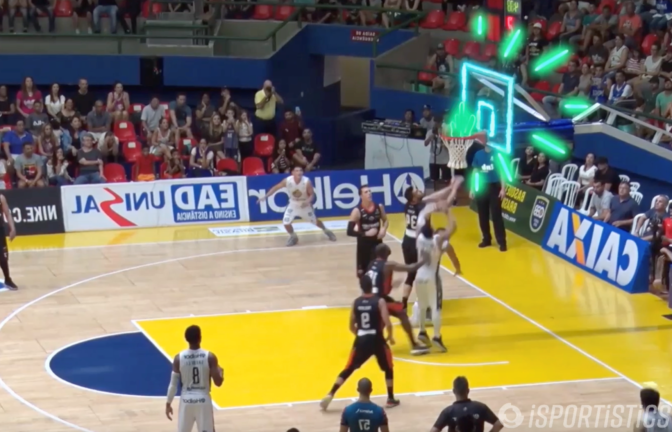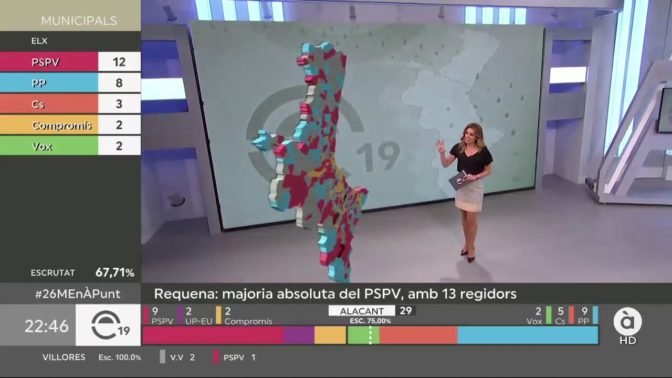The new era of broadcast is here — and it’s powered by NVIDIA.
A rising demand for entertainment content, combined with the shift to streaming platforms, means traditional broadcast workflows need to evolve. To take advantage of the latest capabilities driven by AI and accelerated computing, broadcasters must transition to flexible, software-defined infrastructure.
NVIDIA is working with partners to meet these demands, bringing the future of production and distribution to viewers around the world. NVIDIA RTX GPUs and low-latency NVIDIA Networking products are driving the latest trends in broadcast, including AI, real-time graphics and virtual production.
AI Takes Broadcast to New Heights
AI-accelerated technologies are helping enhance the experience for content creation, distribution and consumption. With AI, broadcasters can use advanced capabilities like recommender systems, gain deeper insights into content and viewership, and automate repetitive tasks to enhance productivity and efficiency.
NVIDIA partner, MEDIAPRO Group, created AutomaticTV, which can process four 4K cameras at 60 frames per second in real time. Its AI algorithms decide which is the best image to extract that shows the action on the field, automatically, thanks to NVIDIA RTX GPUs and accelerated computing.
NVIDIA Inception member iSPORTiSTiCS is also using AI and training algorithms to enhance the experience for sporting events. Its smart sports video platform is based on the cloud and powered by AI and computer vision.
iSPORTiSTiCS uses various NVIDIA Enterprise resources — AI acceleration and AWS infrastructure on NVIDIA GPUs with technologies including CUDA, Maxine and TensorRT — to deliver on-air graphics, full-resolution video editing capabilities and automation in production processes.

The Digital Transformation
While AI technologies provide capabilities for quicker content creation and distribution, internet protocol-based workflows enable greater creative control and IT manageability, and help customers get to market faster.
Panasonic’s KAIROS platform, for example, allows customers to better manage broadcast and streaming feeds. Unlike traditional hardware-based switches, KAIROS offers an open architecture system for live video switching with complete input and output flexibility, as well as resolution and format independence.
Panasonic is working on new software that uses 100Gb of baseband I/O in parallel with the 100Gb ST 2110 network, which requires only the specific bandwidth per channel depending on the format of each input, and relies on an NVIDIA ConnectX Series Networking card with Rivermax. This allows the transfer of video from the network to a GPU for processing for the KAIROS Core 100 and KAIROS Core 1000. It brings power and performance to layer-based content creation with a single frame of latency, and efficiently removes constraints on the platform’s inputs and outputs.
intoPIX is also showcasing its efficient JPEG XS software solutions for low-latency video streaming using NVIDIA GPUs. The intoPIX FastTICO-XS SDK is optimized for the NVIDIA Jetson edge AI platform and discrete GPUs, and delivers real-time encoding and decoding in HD, 4K and 8K. The SDK seamlessly integrates with NVIDIA Rivermax SDKs for lower bitrate SMPTE ST 2110-22 workflows.
Virtual Productions Take the Stage
Virtual productions and immersive environments are taking content consumption to the next level, thanks to real-time technologies.
Brainstorm has been on the cutting edge of virtual content production for decades with products such as eStudio, Aston and InfinitySet, which help customers embrace virtual productions and real-time 3D graphics. With GPU-powered real-time ray tracing, InfinitySet enables professionals to create photorealistic virtual productions and showcase complex events.

Broadcasters are also using real-time technologies to create and deliver high-quality content using GPU-accelerated workstations. With NVIDIA RTX powering the Lenovo ThinkStation P620, storytellers can expand their creative capabilities and deliver higher fidelity viewing experiences through the use of virtual sets.
Content Creation From the Cloud
Broadcasters are using cloud solutions to run workflows, produce high-quality projects and deliver content from any location.
Cinnafilm, a global leader in innovative video and audio optimization solutions, uses the cloud to power creative workflows from anywhere. Using a large-scale, public cloud deployment of NVIDIA GPUs, the company’s award-winning standards and resolution conversions are accessible to anyone with internet connectivity. Cinnafilm uses PixelStrings SaaS to perform complex image processing, such as standards conversion, denoising, enhancing resolution, retiming and SDR-HDR conversion.
NEA — ATEME’s full-IP solution for cloud DVR and time-shifted content — combined with NVIDIA Networking hardware acceleration allows broadcasters to optimize their network usage and reduce storage requirements. This creates an energy efficiency that results in a reduced carbon footprint while providing a high quality of experience for viewers.
Professional Broadcast at GTC
Learn more about the technologies driving the future of broadcast at NVIDIA GTC, which runs from Nov. 8-11. Some featured sessions include:
- Live Replays With Frame Interpolation and Cloud Processing
- Reimagine Storytelling
- Using AI-Driven Tracking for Virtual Production, Interactive Art and Live Entertainment
- Transforming Storytelling with Digital Avatars
And don’t miss NVIDIA CEO Jensen Huang’s keynote address on Nov. 9 at 9 a.m. CET, with a rebroadcast at 8 a.m. PST.
Register for GTC now for free, and see how broadcasters are redefining how content is created, distributed and consumed.
Featured image courtesy of Brainstorm.
